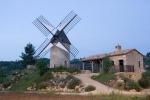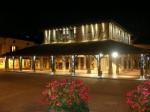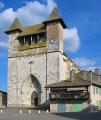 Home
Home- > Tourism France
- > Aquitaine
- > Dordogne
- > Tremolat
Tourism Tremolat
Tremolat is situated in the department of the department Dordogne and the Aquitaine region.
Sights
- Church Saint-Hilaire
- Church Saint-Nicolas
- the basin water
- the panorama of the cingle
Museums and monuments to visit
-
 Le cloître de CadouinCadouin Abbey was built in 1115 by Gérard de Salles. The tour presents different architectures: the novel, in the church and in the Gothic cloister, which was rebuilt in the late ...
Le cloître de CadouinCadouin Abbey was built in 1115 by Gérard de Salles. The tour presents different architectures: the novel, in the church and in the Gothic cloister, which was rebuilt in the late ... -
 L'abri PataudThe Pataud, classified as a historic monument since 1958, became the property of the National Museum of Natural History in 1957. He works on the study of the evolution of internal lithic facies. It is ...
L'abri PataudThe Pataud, classified as a historic monument since 1958, became the property of the National Museum of Natural History in 1957. He works on the study of the evolution of internal lithic facies. It is ... -
 Musée national de la PréhistoireCastle of Les Eyzies welcomes the prehistoric museum of Eyzies since 1923. The presentation of the prehistoric is through exhibitions of original objects from the Perony excavations and studies ...
Musée national de la PréhistoireCastle of Les Eyzies welcomes the prehistoric museum of Eyzies since 1923. The presentation of the prehistoric is through exhibitions of original objects from the Perony excavations and studies ...

Tour to explore the Dordogne
- Thème : Sites and museums
- Départ : Bergerac
- Durée : 6 jours
For 6 days, you will discover the Dordogne. You will see that the third French department, by its size, has many places of interest to visit. You can admire beautiful castles and beautiful villages.




Discovering The Perigord
- Thème : Sites and museums
- Départ : Les eyzies-de-tayac-sireuil
- Durée : 5 jours
Circuit 5 days you can explore the history, culture and traditions of Périgord




Come to discover Beynac and Cazenac
- Thème : Walks
- Départ : Beynac-et-cazenac
- Durée : 4 jours
The origins of Beynac goes back to the 10th and 9th century B.C, the population chose this site to settle. The village made of stone and wood controlled the Dordogne Valley. Then the Gauls settled there in the 6th and 5th century B.C.




Discover Villeréal
- Thème : Walks
- Départ : Villereal
- Durée : 2 jours
Villeréal in the south west of France, 2 hours from Bordeaux and Toulouse. The quality of life, the friendliness of the inhabitants and the traditions are the main characteristics of this village dating from the 13th century at the border of Perigord.




















































